GL SPECTIS 1.0
GLOptic is the brand name of Just Normlicht GmbH Germany the worlds’ leading supplier of standardized light solutions for printing and graphic arts industries.
Senze-Instruments present you with the new GL optic mini-spectrometer for various applications : the GL SPECTIS 1.0.
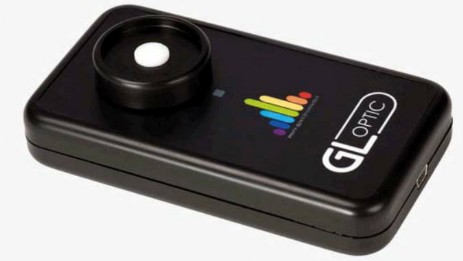
The GL SPECTIS 1.0 is a practical and reliable measuring device. It is ready to work immediately after connecting to your PC. No extra power supply is required. Thanks to its high sensitivity and accuracy it is a perfect solution in light measurement.
Different light sources like LED, Fluorescent Lamps or LCD Displays require different optical probes. Mini-spectrometer can be combined with additional equipment to measure all different light sources, displays as well as LED light. Find out more about our best mini-spectrometer available on market now!
The GL SPECTIS 1.0 mini-spectrometer’s optical systems and software can be easily adapted to meet any customers’ needs.
Features:
• high sensitivity and precise calibration
• low noise and stable measurements
• ready to work when connected to PC after approximately 10 min
• small size and low energy consumption
• powered via USB connection
Applications:
• different light sources measurements: halogens, fluorescent lamps
• LED measurement and testing compliant to with CIE 127
• display measurement
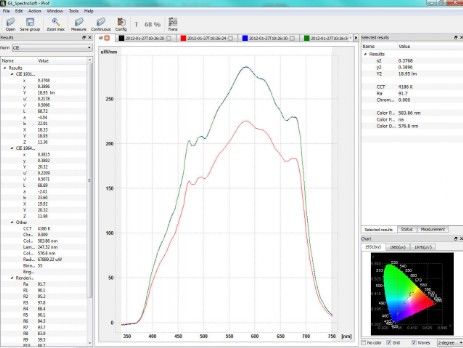
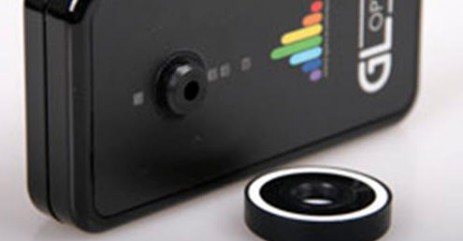
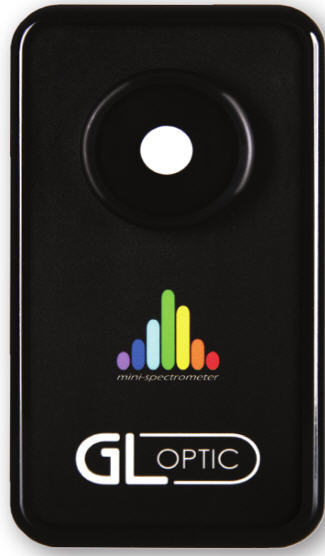
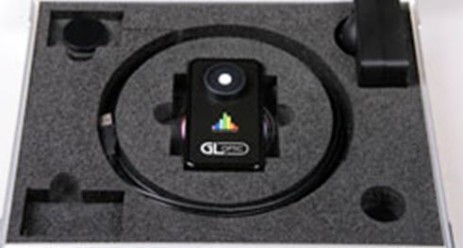
SPX driver Software
The GL SPECTIS 1.0 spectrometers are delivered with SPX free-of-charge software pack. It is a driver software for measuring devices which enables the computer system of your PC to control and communicate with the device.
It also features the measurement mode to run measurements when the spectrometer is connected to your PC. This software gives you information on the native data of measured spectra as well as a simple graphical representation. The data can be later processed either in spreadsheets or other spectral analysis programs.
SPX controls the measurement process and you can set proper integration time depending on light conditions and also determine the number of repeated measurements. It is possible to save data in the *csv format which can be imported into Excel. Native data show the spectral value of the test results in each specific wave length. For the mini-spectrometer the data is obtained in a 1,7nm interval. The bottom line of the screen shows the status of the device, spectrometer identification number and indicates the temperature of the spectrometer.
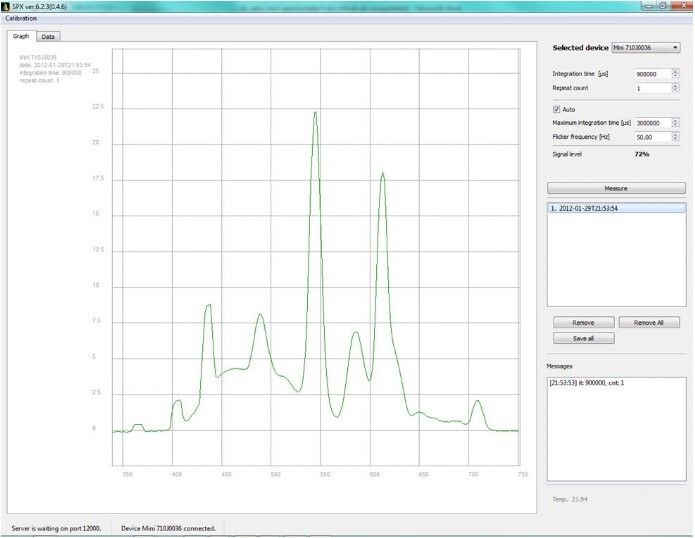

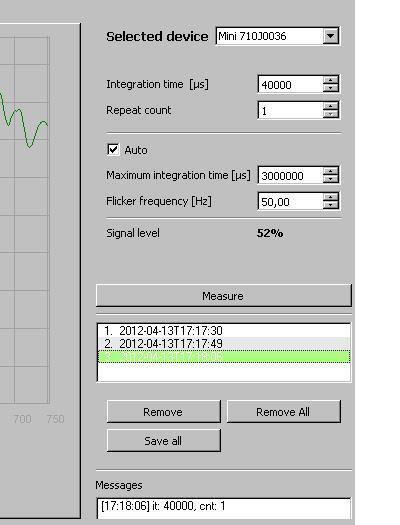
The SPX software contains all the necessary options
for bandpass error correction, correction of baseline
level changed by temperature and calculation procedure
for OSR* system /Optical Stray Light Reduction/ to
determine and correct the influence of stray light
on measured spectra.
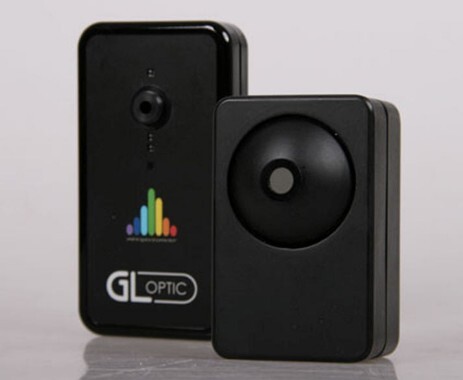
The GL SPECTIS 1.0 : technical data sheet
Spectral range 340-750 nm
Detector CMOS image sensor with slit
Numer of pixels 256
Physical resolution ~ 1.7 nm
Wavelength reproducibility ± 0.5 nm
Integration time 5 ms to 100 s
A/D conversion 16 bits
Signal to noise ratio 1000:01:00
Stray light 2*10E-3
Optical FWHM 12 nm
Spectroradiometric accuracy ± 4%
Measurement uncertainty of color ± 0.0015
coordinates (x,y)
Connector for optical fiber SMA905D
PC interface USB 2.0 standard
Power consumption USB current consumption < 100mA
Ambient temperature 5-35 °C
Dimensions 62x115x19/30 mm
Weight 90 g
The GL SPECTIS 1.0 mini-spectrometer is a practical and reliable measuring device.
That's the ideal technician tool to work on site, in labs, in plant.
It is ready to work immediately after connecting to your PC.

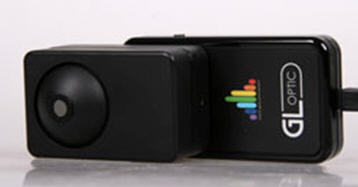
• Ideal for binning and quick quality control of LEDs
• Ready to work immediately after connection to mini - spectrometer
• Automatic calibration file download
• High precision of test results
Technical data sheet
Sphere diameter: 48mm
Entrance diameter: 9mm
Spectral range: from 350 nm to 750nm
Dimensions: 54mm x 85mm x 37mm
Exit: at 90 ⁰ from entrance
“The ultimate solution for luminous flux and radiant power measurement of LEDs.”
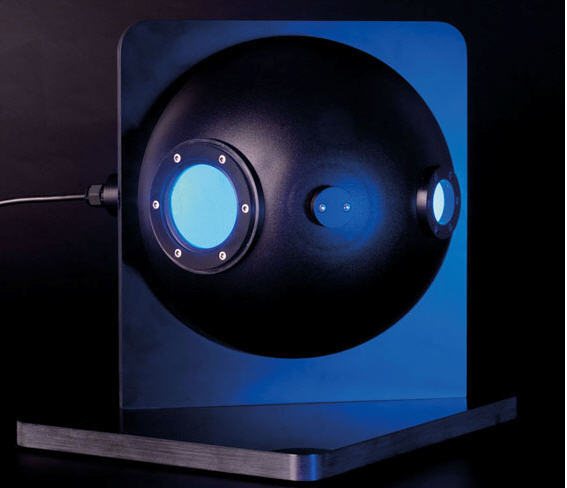
The GL Optic spheres are available in 2 sizes:
• GLS125 with 125mm diameter as a low-cost solution
• GLS205 with 205mm diameter conforming to CIE standards for LED measurement.
All GL Optic spheres are universal and can be used with the PROFI SPECTROMETER with fiber optics bundle or with the mini-spectrometer with a proper adaptor installed directly on the sphere
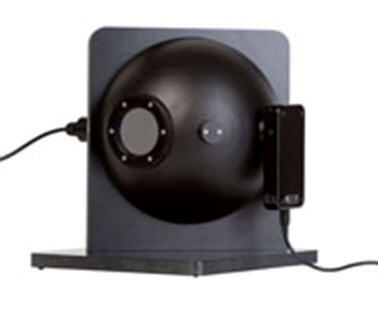
• Measurement of LEDs compliant with CIE 127:2007
• Total Luminous Flux or Partial Flux measurements
• Geometry for front emitting diodes and other sources
• Universal ports for SMA fiber optics or mini-spectrometer
- Sphere inside diameter 205 mm
- Entrance aperture diameter 50 mm
- Outside dimensions 265mm x 270mm x 225mm
- Spectral range 240 – 2600nm
- Inner coating Barium sulfate (BaSO4)
- Auxiliary light source White LED
- Weight 3.3kg

For customer using different lights sources with different diameters, we propose the GLS 205 with a special aperture system : the high Performance Iris Diaphragms.
This allow to adjust the opening manyally from 2,5 to 50 mm opening.
Ref. GLS205IW
OTHER MODEL AVAILABLE : THE GLS 1100
Diam. 1100 cm
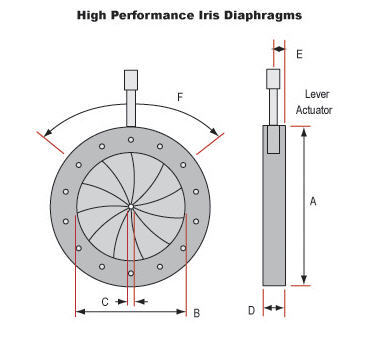
GL Optic integrating sphere GLS 1100
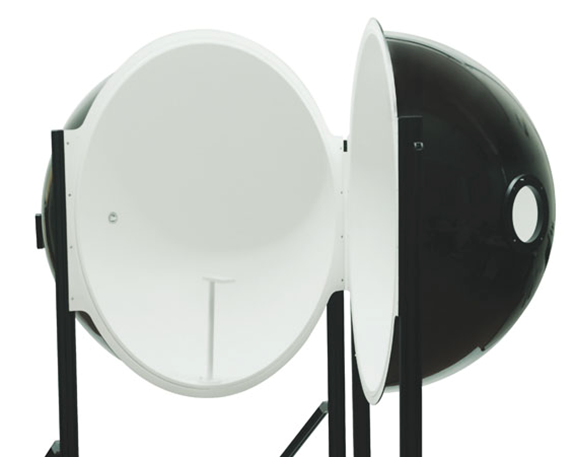
The GL Optic Integrating Sphere GLS 1100 has been designed for the measurement of Luminoux Flux and Radiant Power of LED Luminaries and big LED modules as well as for other light sources compliant with the recommendation of the CIE Technical Committee published in Technical Report CIE 127:2007.
The size of the sphere and the side opening system help with the easy installation of different light sources and additional adapters and holders to measure all kinds of light sources. Conforming to CIE recommendations front emitting diodes can be measured at the wall entrance in 2π geometry. Other types of LEDs or other sources with wider emission should be measured at the center of the sphere in 4π geometry .
“The ultimate solution for luminous flux and radiant power measurement of LEDs.”
All GL Optic spheres are universal and can be used with the PROFI SPECTROMETER with fiber optics bundle or with the mini-spectrometer with a proper adaptor installed directly on the sphere.
• measurement of LEDs compliant with CIE 127:2007
• universal lamp post
• Geometry for front emitting diodes and other sources
• universal ports for SMA fiber optics or mini-spectrometer
• Auxiliary light source for self-absorption compensation
Entrance aperture diameter 150 mm
Outside dimensions 1200mm x 1125mm x 1800mm
Spectral range 240 – 2600nm
Inner coating Barium sulfate (BaSO4)
Auxiliary light source White LED
This display sensor from GL Optic is an accessory which is designed to be used with our mini-spectrometer for luminance measurement of flat LCD and OLED panels, and plasma FPDs.
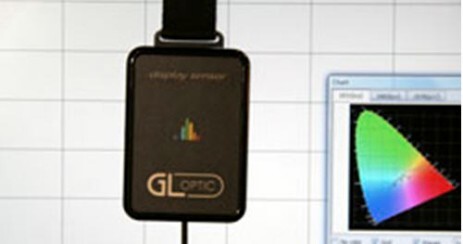
The set includes an optical measuring probe, fiber optics and adaptor for the mini–spectrometer with a coder for automatic detection of accessory calibration file. It is delivered with a certificate of factory absolute spectral calibration. The measuring probe can be installed on a tripod for distance measurements. Alternatively, it can be hanged directly on a screen with the use of a special stripe for contact measurements.
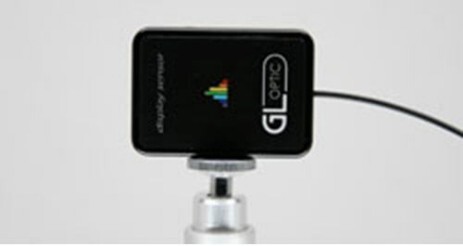
Features:
• Small size portable device
• Ready to work immediately after connection to mini - spectrometer
• Automatic calibration file download
• High precision of test results
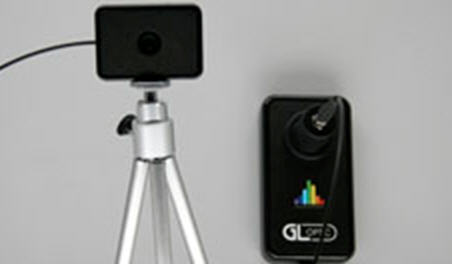
Measuring point diameter : 10mm
Spot size in 1m distance : approx. 5cm
Spectral range : from 400nm to 730nm
Measuring probe size : 44mm x 62mm x 14mm
Fiber optic length : 1,5m
Measurement uncertainty (x,y): + / - 0,002
Standard testing range : from 1cd/m2 to 5.000cd/m2
[lower range require longer integration time]
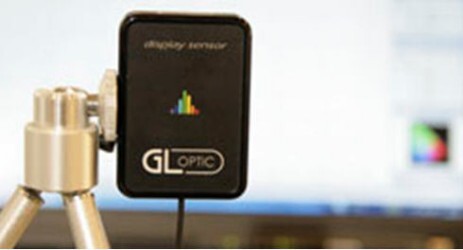
GL SpectroSoft is an intuitive and user friendly software package for
complete and advanced spectral analysis.
It is an easy to use system with the following features:
• absolute or relative measurements
• flexible data interpretation
• helpful tools for easy analysis and interpretation of measured spectra
It is a helpful tool for laboratory application as well as for field work in production quality control and for general light assessment purposes.
The software interface gives the user quick access to useful information and functions. You can easily analyze the spectrum in the graphic format and check the data in many different ways.
The windows can be rearranged in order to show the information required by the user.
Calculation of tri stimulus values for the specification of light source color coordinates according to CIE standards: CIE 1931 2⁰ observer and CIE 1964 10⁰ observer.
It is also presented in Chromaticity Diagrams conforming to CIE.
You can select diagrams CIE 1931, CIE 1964 and CIE 1976 amended Uniform Chromaticity Scale which give better presentation of colors.
Other calculations give important information about:
• Correlated Color Temperature of a light source CCT – Kelvin value
• Chromaticity Error
• Color Pick
• Color dominant

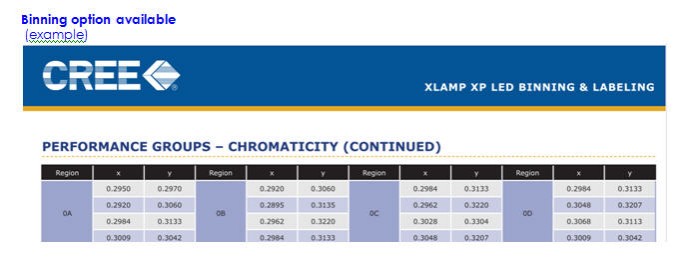
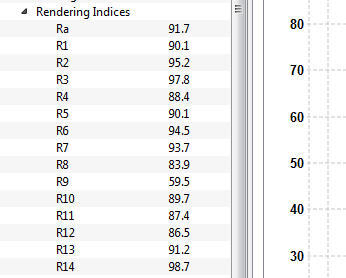
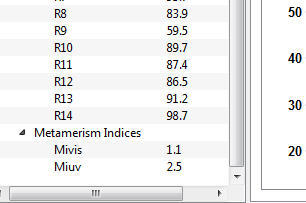
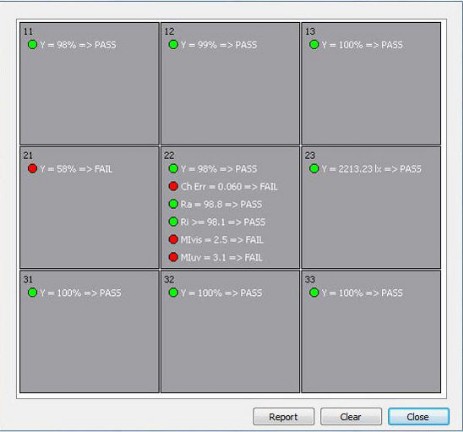
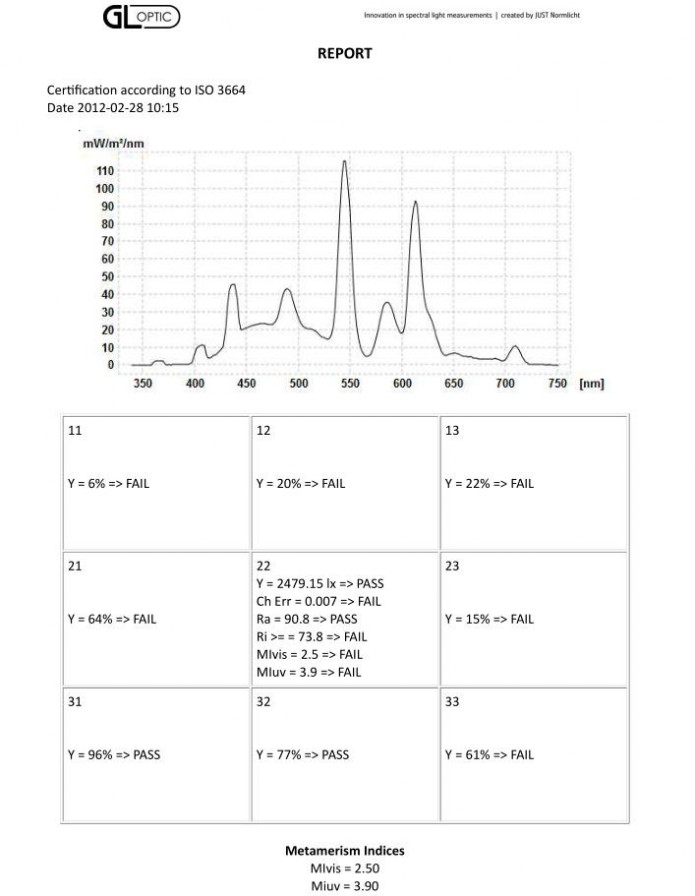
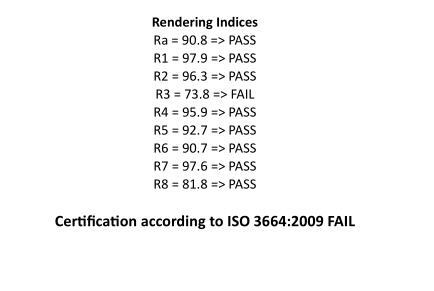
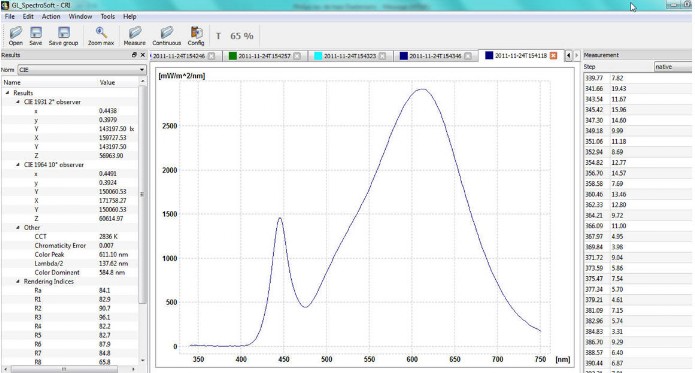
Test before and after the changing of lamps in a Biluribin Light
